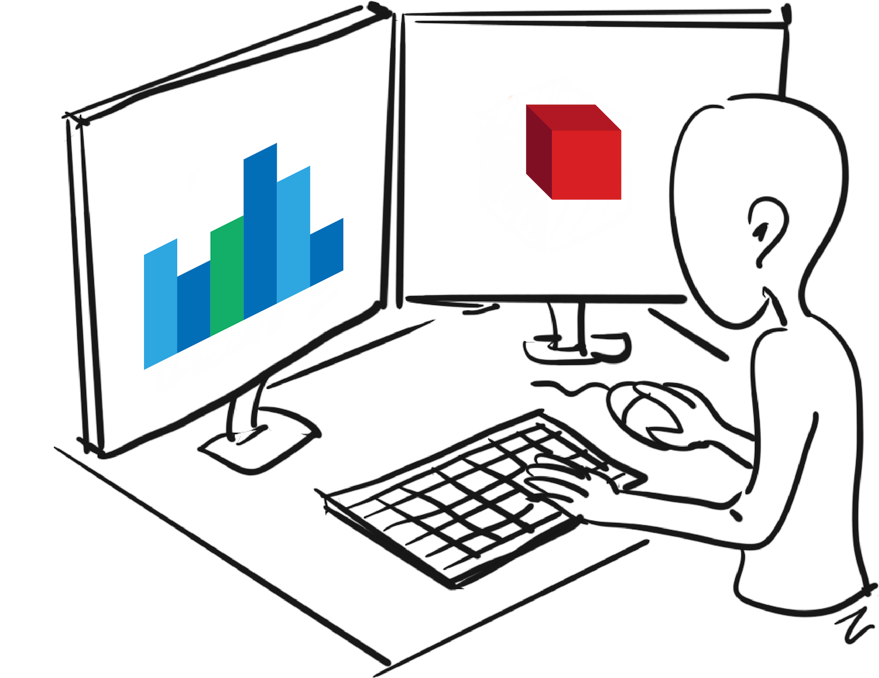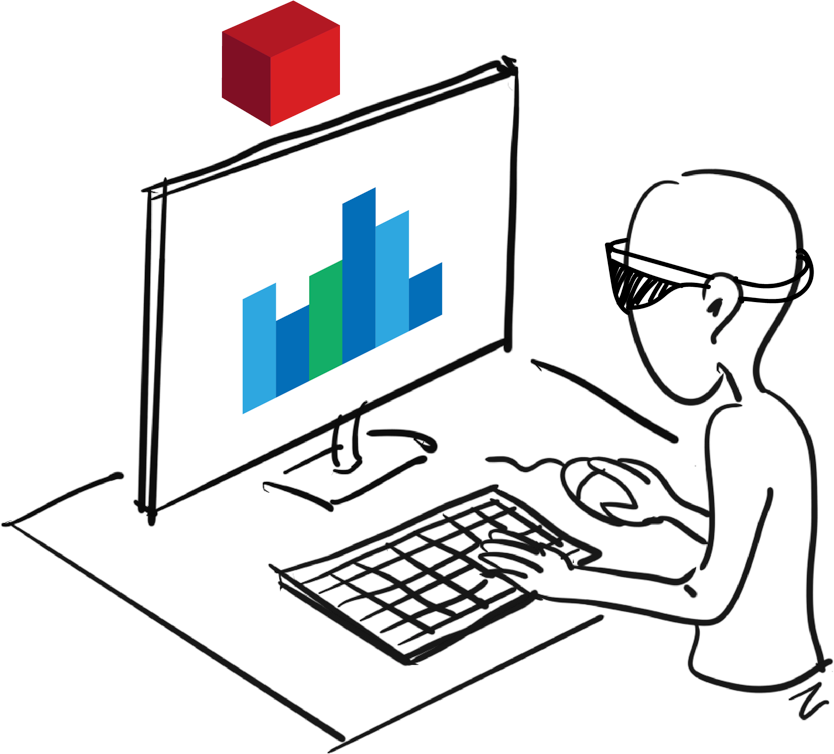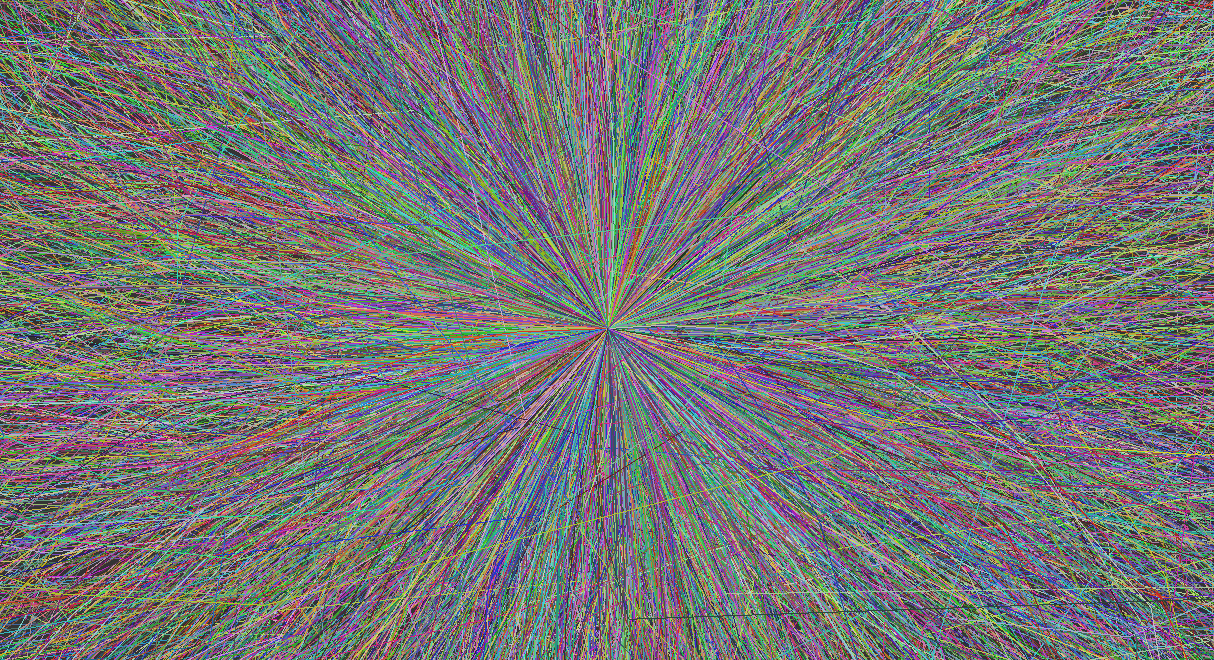Towards an Understanding of Augmented Reality Extensions for Existing 3D Data Analysis Tools
This project investigates the combination of a PC + AR hybrid setting to improve the visualization and exploration of 3D spatial data. Our first application domain is in high energy physics (HEP).
We present an observational study with domain experts to understand how augmented reality (AR) extensions to traditional PC-based data analysis tools can help particle physicists to explore and understand 3D data. Our goal is to allow researchers to integrate stereoscopic AR-based visual representations and interaction techniques into their tools and thus ultimately to increase the adoption of modern immersive analytics techniques in existing data analysis workflows. We use Microsoft’s HoloLens as a lightweight and easily maintainable AR headset and replicate existing visualization and interaction capabilities on both the PC and the AR view. We treat the AR headset as a second yet stereoscopic screen, allowing researchers to study their data in a connected multi-view manner. Our results indicate that our collaborating physicists appreciate a hybrid data exploration set up with an interactive AR extension to improve their understanding of particle collision events.
Workshop vision paper
Xiyao Wang, Lonni Besançon, Florimond Guéniat, Mickael Sereno, Mehdi Ammi, and Tobias Isenberg (2019)'' A Vision of Bringing Immersive Visualization to Scientific Workflows''. ' CHI Workshop on Immersive Analytics: Interaction Design and Prototyping for Immersive Analytics, 2019. [pdf]
Paper for ACM CHI 2020
Xiyao Wang, Lonni Besançon, David Rousseau, Mickael Sereno, Mehdi Ammi, and Tobias Isenberg (2020)'' Towards an Understanding of Augmented Reality Extensions for Existing 3D Data Analysis Tools''. ' Proceedings of the Annual Conference on Human Factors in Computing Systems (CHI, April 25–30, Honolulu, HI, USA), ACM, New York, 2020 [pdf]
Video for ACM CHI 2020
Next step (under construction)
Apply the design insights to a more specific data analysis scenario: understanding the track reconstruction results of machine learning algorithms.
The physicists, now use different machine learning algorithms to relate the measured particle hits to their trajectories. As is known for all that results from ML always have errors. Currently, physicists analysed the data using global statistic tools like plotting a histogram of a parameter. We aim to combine their analysis tools with the hybrid system to let them better understand the results and compare algorithms using an additional visual analytic method.


